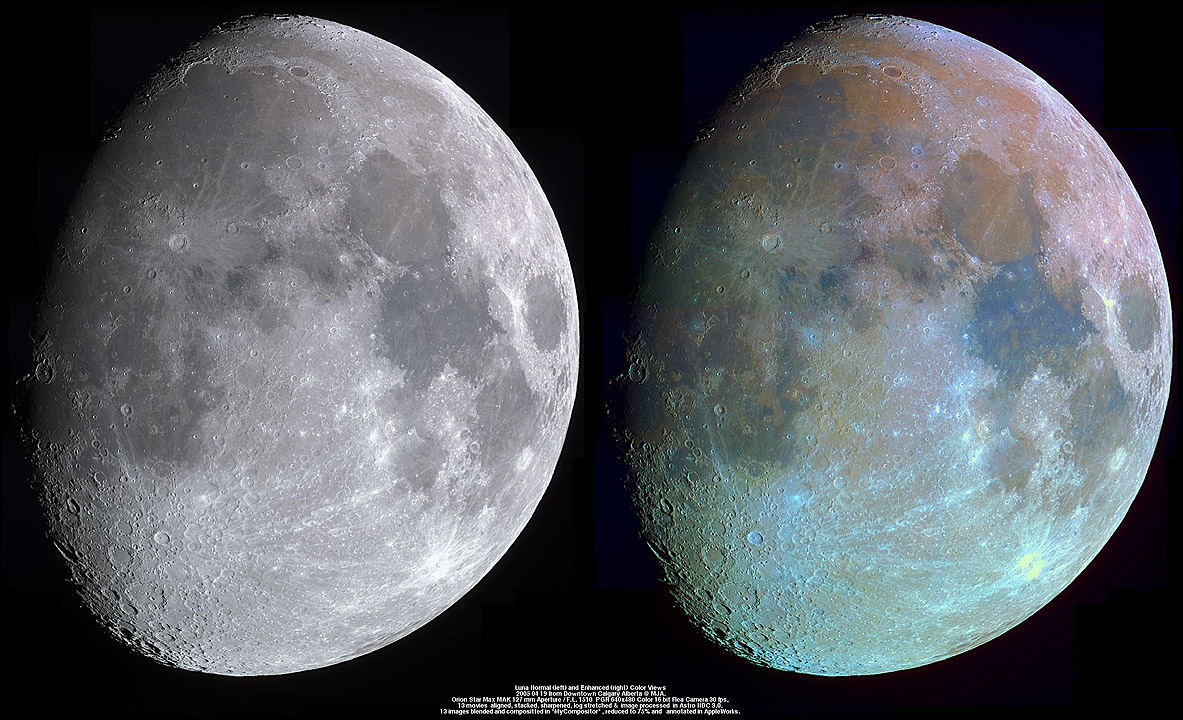
image by Milton Aupperle
Milton writes, Here are two side by side images of the 10.6 day old moon. The images were processed in exactly the same way (stacking, alignment, pre-frame sharpening and log stretch), except that the image on the right has been treated with a color saturation tool in Astro IIDC to enhance the very subtle colors in the left image. If you look closely at the left image you can make out the slightly reddish tinges of the mare south of Plato and the slightly bluish tinges of the mare Tranquillitatis, but the color tool makes this more obvious. The enhanced color image gives me some new targets for higher resolution / longer focal length imaging, such as the orange yellowish patch east of Alphonsus near crater Lassell, and the darker blue area south of Posidonius near crater Littrow. Chuck Wood back. I am taken by the triangle of blue on the east side of Mare Fecunditatis. I had never noticed it before but now that I know to look, can see it in the Galileo multi-spectral image. But the details are clearer in Milton’s image. This color image also emphasizes that the highlands are not all the same color. The highland area from Crisium to the North Pole seems oranger than the southern highlands, even taking into account the blueing due to Tycho’s rays. And again, the Galileo image confirms this difference. Perhaps the non-mare terrain in the northern hemisphere is dominated by Imbrium ejecta, which may be more orange-hued than the purer highlands of the south.
Chuck Wood
Technical Details:
April 19th, 2005. Orion Star Max MAK 127 mm Aperture / F.L. 1510 PGR 640×480 Color 16 bit Flea Camera 30 fps, 13 movies aligned, stacked, sharpened, log stretched & image processed in Astro IIDC 3.01.00. 13 images blended and compositted in “MyCompositor” , reduced to 75% and annotated in AppleWorks.
Related Links:
Anothe color image of the 8.4 day old Moon
Milton’s website
Yesterday's LPOD: A Classic Trio
Tomorrow's LPOD: A Non-Crater
COMMENTS?
Register, Log in, and join in the comments.



